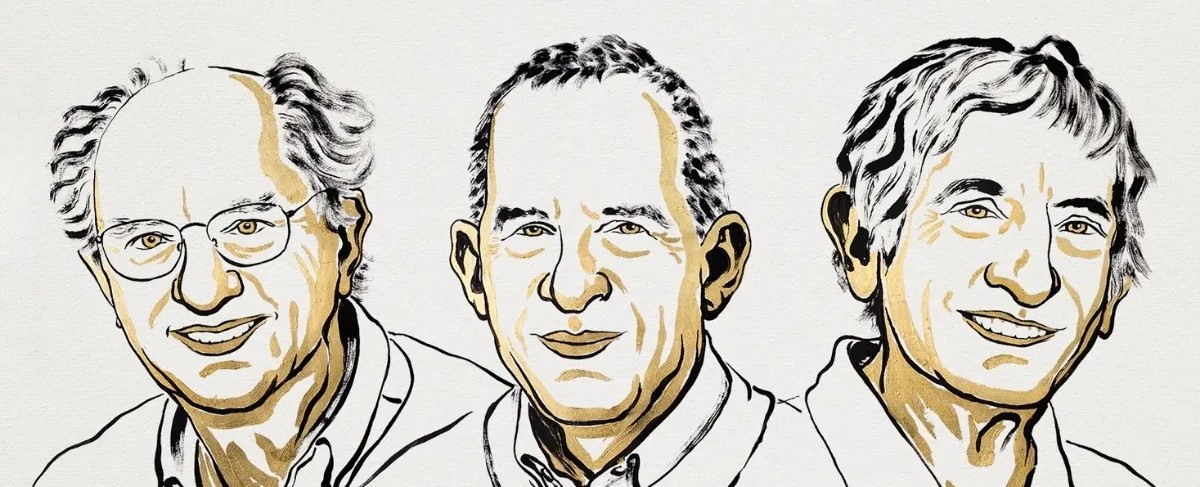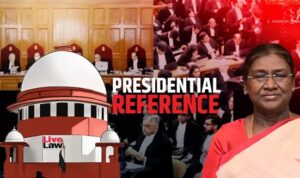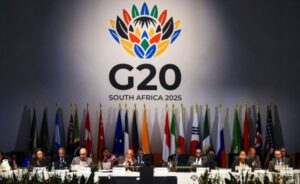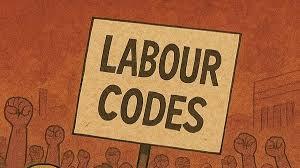🏅 Award Announcement
Awarded by: The Royal Swedish Academy of Sciences
Year: 2025
Field: Physics
Laureates:
John Clarke – University of California, Berkeley, USA
Michel H. Devoret – Yale University, USA and University of California, Santa Barbara, USA
John M. Martinis – University of California, Santa Barbara, USA
Award Citation:
“For the discovery of macroscopic quantum mechanical tunnelling and energy quantisation in an electric circuit.”
⚛️ 1. Background: The Quantum Mechanics Context
Quantum mechanics governs the behaviour of subatomic particles like electrons and photons.
It predicts phenomena such as:
Wave-particle duality
Quantum tunnelling (particles passing through barriers)
Energy quantisation (discrete energy levels)
Normally, quantum effects are seen only at microscopic scales (atoms, electrons).
The challenge has always been:
👉 Can large systems (visible to the naked eye) also display quantum behaviour?
The 2025 Nobel laureates answered this question with a yes — through their experiments.
⚙️ 2. The Core Discovery
Key Achievement:
They demonstrated quantum tunnelling and energy quantisation in a macroscopic (hand-sized) superconducting circuit — something previously thought impossible.
How?
They built an electric circuit made of superconductors separated by a thin insulating layer — known as a Josephson junction.
In a Josephson junction:
Superconducting electrons (Cooper pairs) can tunnel through the insulating barrier without resistance.
The collective behaviour of billions of electrons acts like a single quantum particle.
🧲 3. Understanding the Experiment: Simplified
| Concept | Explanation |
|---|---|
| Superconductors | Materials that conduct electricity with zero resistance at very low temperatures. |
| Josephson Junction | A sandwich of two superconductors separated by a thin non-conductive barrier. |
| Macroscopic Quantum System | A large system (visible in size) behaving according to quantum laws. |
| Quantum Tunnelling | When a quantum system escapes a potential barrier it classically shouldn’t cross. |
| Energy Quantisation | The system can absorb or emit only specific (quantised) energy amounts. |
The Process:
The circuit initially has zero voltage — current flows freely without resistance.
This state is like being “trapped” behind an energy barrier.
Suddenly, the system “tunnels” out of this state — a purely quantum phenomenon.
When it escapes, a voltage appears, confirming the tunnelling event.
Further measurements showed energy levels were discrete (quantised) — matching quantum mechanical predictions.
💡 4. Why It Is Revolutionary
Before this, quantum effects were thought to vanish at macroscopic scales due to decoherence (loss of quantum behaviour through environmental interaction).
Their experiments proved that macroscopic quantum states can be created, observed, and controlled.
This bridged the gap between:
Microscopic quantum physics and
Macroscopic electrical engineering.
🔬 5. Historical Milestone
Years of Experiment: 1984–1985
Collaborating Institutions: UC Berkeley, Yale University, UC Santa Barbara
Their pioneering circuit became the foundation for superconducting qubits — the building blocks of quantum computers today.
🌌 6. Scientific Importance
A. Conceptual Breakthrough
Demonstrated that quantum mechanics applies to macroscopic systems, not just microscopic particles.
Validated the idea that a circuit made of trillions of particles can act like a single quantum system.
B. Experimental Precision
Required ultra-low temperatures (close to absolute zero) to maintain quantum coherence.
Needed precise control of superconducting materials and ultra-sensitive voltage measurements.
🧮 7. Key Concepts Explained for UPSC
| Concept | Meaning | UPSC Relevance |
|---|---|---|
| Quantum Tunnelling | Particle penetrates through a potential barrier it classically can’t overcome. | Appears in nuclear fusion, semiconductor design, and quantum computing. |
| Energy Quantisation | Energy levels are discrete, not continuous. | Explains atomic spectra, laser operation, and superconducting states. |
| Superconductivity | Zero electrical resistance and expulsion of magnetic fields below a critical temperature. | Used in MRI machines, maglev trains, and quantum circuits. |
| Josephson Effect | Quantum tunnelling of Cooper pairs through an insulating barrier. | Basis for quantum circuits and ultra-sensitive magnetometers (SQUIDs). |
🧭 8. Implications for Modern Technology
The 2025 Nobel-winning work forms the foundation for next-generation quantum technologies:
A. Quantum Computers
Uses qubits that exploit quantum superposition and entanglement.
Superconducting circuits (like those studied by the laureates) are now used by Google, IBM, and others in real quantum processors.
B. Quantum Sensors
Extremely sensitive detectors (e.g., SQUIDs – Superconducting Quantum Interference Devices).
Used in brain imaging, mineral exploration, and gravitational wave detection.
C. Quantum Cryptography
Enables ultra-secure communication by leveraging quantum uncertainty.
Resistant to hacking and data interception.
🌍 9. Broader Significance
Quantum mechanics, a 100-year-old theory, continues to redefine modern technology.
The laureates’ work connects fundamental science with real-world applications.
Their discovery validates that quantum rules apply at all scales — a philosophical and scientific leap.
🗣️ 10. Quote from the Nobel Committee
“It is wonderful to be able to celebrate the way that century-old quantum mechanics continually offers new surprises. It is also enormously useful, as quantum mechanics is the foundation of all digital technology.”
— Olle Eriksson, Chair of the Nobel Committee for Physics
📚 11. UPSC Relevance and Possible Questions
A. Prelims Possible MCQs
The Josephson Junction is primarily associated with which of the following phenomena?
(a) Superconductivity
(b) Quantum Tunnelling
(c) Photoelectric Effect
(d) Blackbody Radiation
✅ Answer: (b) Quantum Tunnelling
The 2025 Nobel Prize in Physics was awarded for demonstrating which concept?
(a) Quantum Entanglement
(b) Gravitational Waves
(c) Macroscopic Quantum Tunnelling and Energy Quantisation
(d) Bose-Einstein Condensation
✅ Answer: (c)
B. Mains Relevance (GS Paper 3 – Science & Tech)
Sample Question:
“Quantum mechanical phenomena are now observable at macroscopic scales. Discuss how this development has transformed modern technology and its implications for quantum computing.”
Points to Include:
Meaning of macroscopic quantum phenomena
Contribution of 2025 Nobel laureates
Applications in quantum computing, sensors, and communication
Policy implications for India’s National Quantum Mission
🇮🇳 12. Link to India’s Quantum Mission
India launched the National Quantum Mission (NQM) in 2023 (2023–2031).
Focus: Develop quantum computers, sensors, communication, and materials.
The Nobel-winning discovery strengthens the scientific foundation for India’s quantum initiatives and research infrastructure (IISc, IITs, DRDO labs).
🧠 13. Key Takeaways for UPSC Aspirants
The 2025 Physics Nobel Prize highlights quantum technology as a future-defining field.
Bridges fundamental science and technological innovation.
Reinforces how quantum effects can operate at visible scales, leading to:
Quantum computers
Secure communication systems
Precision measurement devices
Aligns with global efforts toward Quantum Revolution 2.0.
🔗 For more detailed UPSC notes and science & tech updates, visit www.victorgrowth.com







